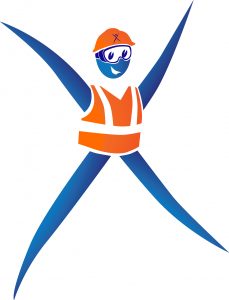 Traffic Safety
Traffic Safety
Traffic safety can be confusing for everyone – even the CSPs at Safex! That’s why we called in a local expert and our friend, Mr. Parr Peterson, of the Paul Peterson Company, to help us better understand safety on the roads! During our interview, Mr. Peterson discussed a lot of details revolving around pre-planning traffic and road work. Major points, aspects or elements? included traffic control plans, the Ohio Manual of Uniform Traffic Control Devices (or OMUTCD for short), and municipalities that require traffic control plans.
What is a Traffic Control Plan?
A Traffic Control Plan is set whenever any kind of work will disrupt a road way or passage way of vehicles, bicycles, and/or pedestrians. Traffic Control Plans can be set up in two different ways. They can either follow the OMUTCD, or, they can be customized site-specific plans. The OMUTCD is full of plans that cover a lot of situations that may be encountered during road work and can be applied to your specific job situation. Site-specific plans are simply something completely different from the OMUTCD and custom made to your job site and situation.
Who needs to know about Traffic Control Plans?
Local Municipality: Before starting any road work that disrupts traffic patterns, you are required to check with local municipalities to understand the type of traffic control plan they require. The City of Columbus requires a site-specific plan, custom made to every job in the area. Site-specific plans are very common and most major cities in the United States require a site-specific plan.
Employees: Employees that will be working on the roads must be aware of the plan. They must be familiar with safe areas and how to set up their work zone. Also, each employee, including flaggers, must be trained to work on the roads. Supervisors are required to attend a different training and receive their American Traffic Safety Services Association (ATSSA) certification.
Who can provide training?
The ATSSA can train all employees according to the job they will be responsible for completing. The training class for the ATSSA certification is a three-day training course held every couple of months. Graduates of the program receive a Supervisor Certification. To become a flagger, there is an online class through the ATSSA as well. The ATSSA can also train a trainer to award certifications for in-house training classes. Mr. Peterson completed his certification and is now able to train his employees.
Can there be an exemption from a traffic control plan?
Yes! If employees are located on the shoulder of the road or closer, a traffic control plan is required. If employees are off the road entirely and the work will not be conducting over road ways, on the shoulder of the road, or on the roadway, a traffic control plan is not required.
There’s an App for that!
Smart phones are a great invention! There are now two different applications to download on your smart phone to help create traffic control plans. First, the Work Zone Safety Application will help you to create site-specific plans or plans from the OMUTCD right from your cell phone. The other app, the ODOT Pocket Guide, will give you all the regulations and information you need for preparing a work site. Both applications are free to download – even better!
Can I get a recap?
- There are two types of Traffic Control Plans—an Ohio Manual of Uniform Traffic Control Devices Plan or a site-specific plan.
- Employees working on the road and local municipalities must be made aware of the plan and receive training.
- Supervisors are required to have their American Traffic Safety Services Association Certification.

 Traffic Safety
Traffic Safety